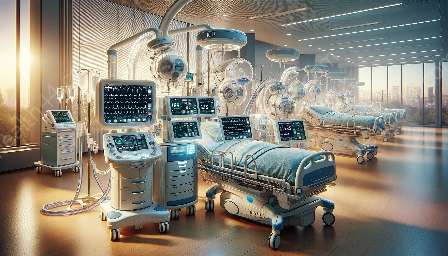Cardiopulmonary bypass machines, also known as heart-lung machines, are essential life support systems used in medical settings. These machines play a crucial role in allowing medical professionals to perform complex surgical procedures, particularly those involving the heart and lungs. The intricate design and functionality of these machines integrate seamlessly with various medical devices and equipment, ensuring the successful support and maintenance of a patient's physiological functions.
The Function and Significance of Cardiopulmonary Bypass Machines
Cardiopulmonary bypass machines allow for the temporary diversion of a patient's blood flow, essentially taking over the functions of the heart and lungs during surgical procedures. By oxygenating and circulating the patient's blood, these machines enable surgeons to perform intricate cardiac and pulmonary procedures with precision and safety. Additionally, cardiopulmonary bypass machines provide medical professionals with the necessary time and environment to operate on vital organs without risking compromised oxygen supply to the patient's tissues.
Integration with Life Support Systems
Life support systems encompass a wide range of medical devices and equipment designed to sustain and support a patient's vital physiological functions. Cardiopulmonary bypass machines are a cornerstone of life support systems, as they directly interface with the circulatory and respiratory systems to ensure continuous oxygenation and circulation of blood throughout a surgical procedure. Their seamless integration with life support systems is crucial in providing patients with the stability and support needed to undergo complex medical interventions.
Connection to Medical Devices and Equipment
Cardiopulmonary bypass machines are intricately connected to a myriad of medical devices and equipment, such as oxygenators, perfusion pumps, and monitoring systems. These components work together in harmony to facilitate the efficient functioning of the bypass machine and ensure the patient's physiological parameters remain within safe and optimal ranges throughout the surgical process. The interconnectivity of these medical devices and equipment forms a cohesive network that supports the intricate operations of cardiopulmonary bypass machines.
Advancements and Innovations in Cardiopulmonary Bypass Machines
Over the years, significant advancements and innovations have propelled the evolution of cardiopulmonary bypass machines, leading to enhanced safety, efficiency, and patient outcomes. Innovations such as miniaturization, improved biocompatibility, and advanced monitoring capabilities have revolutionized the capabilities of these machines, making them indispensable tools in modern medical care. Their compatibility with cutting-edge medical devices and equipment underscores their role as pillars of life support systems in contemporary healthcare practices.
Ensuring Patient Safety and Well-being
Cardiopulmonary bypass machines form a critical aspect of patient safety and well-being during complex medical procedures. The seamless interaction between these machines, life support systems, and various medical devices and equipment creates an environment conducive to maintaining stable physiological parameters, thereby minimizing the risks associated with surgical interventions. The compatibility and integration of these essential components contribute significantly to ensuring the successful outcome of delicate cardiac and pulmonary procedures.
Conclusion
Cardiopulmonary bypass machines play a fundamental role in the realm of medical devices and equipment, particularly in the context of life support systems. Their intricate design and seamless integration with various components enable medical professionals to provide comprehensive support to patients undergoing complex surgical interventions. The evolution of these machines continues to drive advancements in medical care, highlighting their crucial compatibility with life support systems and their indispensable position within the broader landscape of medical devices and equipment.


